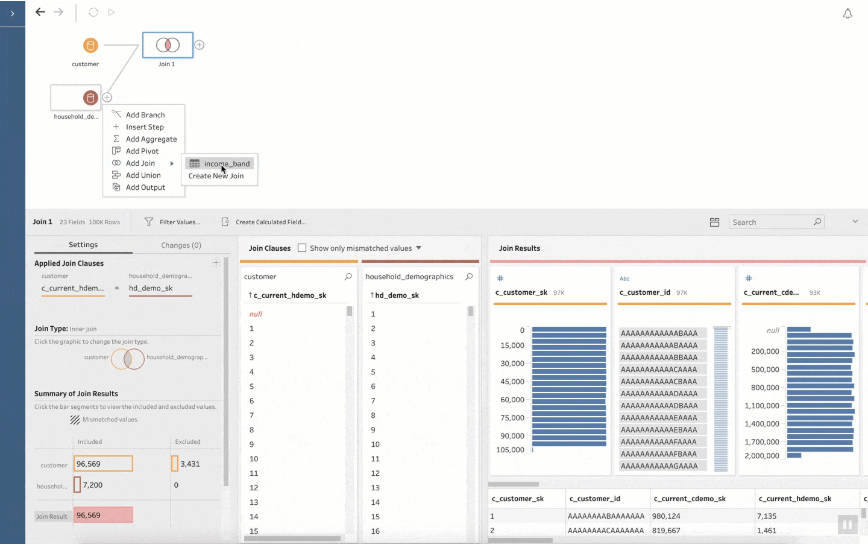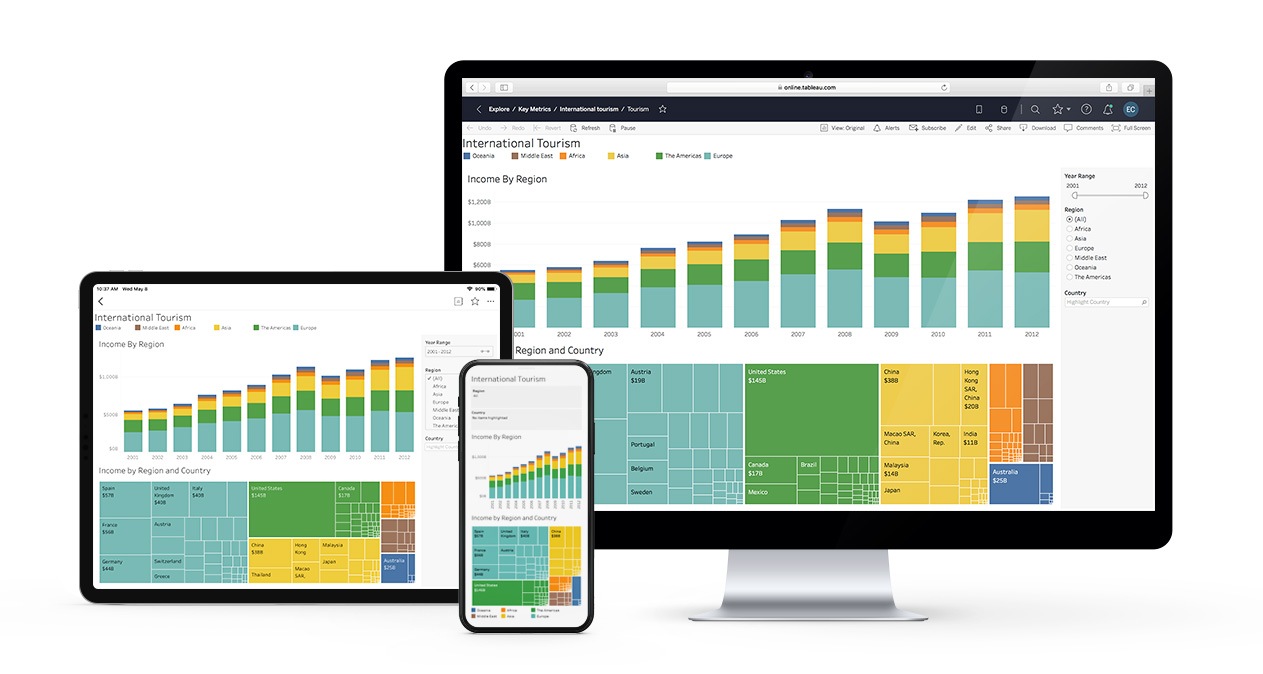

- #Tableau prep online upgrade#
- #Tableau prep online code#
- #Tableau prep online license#
- #Tableau prep online windows#
Site admins can now grant license roles to members upon their first time they login to their Tableau Online or Tableau Server account, so admins don’t have to manually respond to license requests.

9 Designate members’ site role on sign-in Set a subscription email to run after an extract is refreshed, so you will get the latest data out as soon as it’s available.
#Tableau prep online windows#
This capability is only available in Windows for now, but it is expected to arrive to Linux soon.
#Tableau prep online upgrade#
When you start the upgrade process of Tableau Server, it will perform a number of checks that detect common errors and issues that can arise during the install. Customized views are saved separately for easier access. 6 Access the new “Shared with me” tabįrom the home menu, access the “Shared with me” tab, where you can see all the projects, workbooks, and dashboards that others have shared with you on Tableau Server or Tableau Online. Absolute data filters have also been updated with new refinements, and on-boarding and curation resources can now be accessed directly from Tableau Online.Īs for Explain Data, the model can now handle more cases, supports Relationships, improved explanation scoring, and all of Tableau’s data modeling enhancements.

5 Ask data and explain data improvementsĪsk Data and Explain Data got some improvements with Tableau 2020.2, and in this 2020.3 version, they’ve got even more!Īsk Data has improved its suggested questions, and you can now customize suggestions and add display text to use more comprehensible language for your users. Union two or more tables with spatial data and combine unique geographies within the same administrative level, or working with geographic events from different periods of time. You can now analyze spatial data from multiple tables directly from Tableau. 4 Union and explore multiple tables with spatial data This new operator supports string, numeric, Boolean, and date data types. You can now test whether a specified value matches any value in a list of comma-separated values, a set of combined fields like City/State combinations with the IN operator. With these 2 new functions, users can now build models that understand how your data is distributed. Also, use MODEL_PERCENTILE to return the probability of the expected value being less than or equal to the observed mark, based on other predictors. Use the new MODEL_QUANTILE table calc to return a target value at a specified percentile, based on other predictors. 2 New Table Calcs for Predictive modeling Newly created tables are now more accessible since they are available in the Tableau Server, Tableau Online search, and when connecting to data in both Tableau Desktop and web authoring. Admins can also monitor where the data is being written since it is also available via the Metadata APO and Postgress database. Write to database is integrated with Tableau Catalog, so database tables are included in the lineage and impact analysis, so admins can track where the data is going. The external databases available are: SQL Server, Oracle, PostgreSQL, MySQL, Teradata, Snowflake, and Amazon Redshift, with more databases planned for future releases.Īnd if you use Tableau Prep Conductor to schedule flows to run regularly, you can ensure your data is always up to date. Now your data will be loaded to a temporary database table first to then move to the destination table after the data is completely loaded.Īpart from that, you will be able to write to external databases from Tableau Prep, incrementally loading data directly to database tables, appending only newly added rows to your destination table. The Tableau team has listened, and now you can load your data in Tableau Prep to your external data science tool! This makes the process even easier since users don’t have to worry about network errors causing partial data loads.
#Tableau prep online code#
This also meant that if you needed to use the cleaned data for your data science projects, such as running a machine learning model, you’d have to export the data to the external database connected to your data science tools so you could run your code there. It allows you to quickly visualize, clean, merge, and prepare your data for analysis.Įven though Prep has been a long-praised feature, it lacked the ability to export to external databases, meaning you could only export your data in CSV format. Tableau Prep simplifies the process of creating Tableau Extracts and CSVs from data prep flows. And, of course, 2020.3 wouldn’t dare to be an exception!Ī new bunch of features and enhancements came with Tableau 2020.3, and we’re excited to share with you our top 10! Here you are: 1 Code directly into Tableau Prep This year, we’ve already covered our top 10 new features for both Tableau 2020.1 and Tableau 2020.2 here at Empirical.


 0 kommentar(er)
0 kommentar(er)
